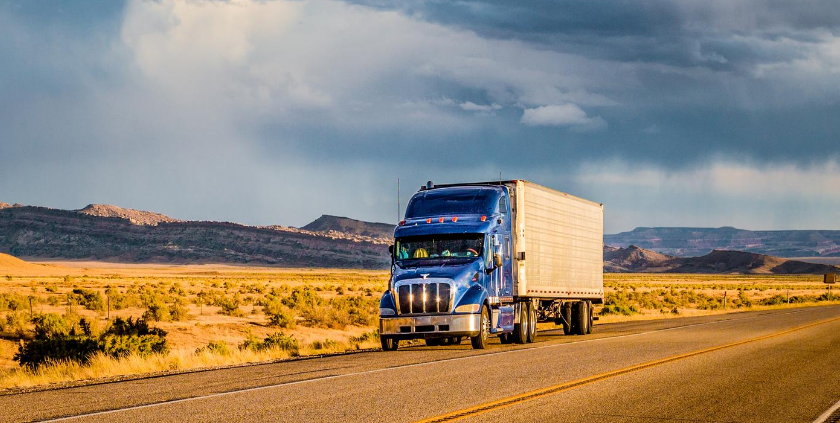
Truck driver pay is one of the key elements that CDL drivers look for in a new job. Some of the most important factors for earning potential are years of experience, location, the number of miles driven, special qualifications such as endorsements, type of haul, and haul range. Not all jobs are equally compensated, but you should be able to know what to expect from your paycheck. Make sure you get all the details from your recruiter. Whether it’s for a new job or to get started in trucking, here are the types of compensation you may get offered.
Base Pay
For company drivers, there are four main types of base pay. Some drivers may receive additional compensation in the form of bonuses or specialty pay. That said, the bulk of your income will come from one of these types of base pay.
1. Hourly
Hourly pay is likely familiar to many drivers because it’s common in many industries. In trucking, pay per hour is frequently used by intrastate delivery companies with relatively small driving ranges. Drivers who are paid hourly can often expect work with frequent stops, loading and unloading, and regular customer interaction. Many hourly positions offer overtime hours which can add a big bonus to your paycheck if you’re willing to take on extra hours.
2. Pay Per Mile
This is one of the most common types of pay across the trucking industry. Pay per mile, often called CPM (cents per mile), pays drivers for the miles they run. Within mileage pay, there are several ways to calculate truck driver pay.
- Practical Mileage. This is the number of miles based on the most efficient path between the address at your starting location and the address at your destination. It’s often calculated with an ELD. Think of it as similar to how Google or Apple Maps calculate a driving route.
- Household Goods (HHG) miles. HHG miles are also called zip code miles. Companies calculate routes based on the shortest distance between the post office zip code in the origin city and the post office zip code in the destination city.
- Hub Mileage, also called Actual Miles. This type of truck driver pay uses the mileage change on the odometer. It accounts for all hours of service miles including changes in routes or stops.
- Sliding Scales Pay. Often this type of pay is used by companies who want to give short-haul drivers a chance to earn a higher income. For example, short hauls (1-500 miles) may pay $0.55 CPM while routes of 500+ miles might earn $0.50 CPM.
In addition to CPM, a job description that pays based on miles should include the number of miles per week that drivers can expect. For example, a job description might offer $0.53 CPM and an average of 2500 weekly miles. A higher CPM is usually good news, but it’s important to read the fine print. Your total pay depends on the number of miles traveled, so look for jobs with a high CPM and enough miles to earn the paycheck you want.
3. Salary
Salaried trucking jobs offer income consistency. For drivers who receive a salary, income is not dependent on the specific miles or hours worked. Instead, a flat rate is set at the start of the job contract and drivers will consistently earn that amount. Often, salaried drivers receive pay weekly.
4. Pay Per Load

Pay Per Load is the least common type of base pay. Most jobs that offer pay per load are in the agriculture, oil and gas industries, or are local delivery jobs.
Drivers earn a flat rate of pay for each load they deliver. In this type of pay, drivers earn more when they deliver more loads regardless of hours or miles.
Additional Truck Driver Pay
Per Diem
In a nutshell, per diem is money given for any place you stay overnight, meals, and other incidental expenses. Per diem is a form of reimbursement, but the biggest benefits come during tax season. Companies may offer per diems by day, per mile, or even as a percentage. If you are a company driver, per diem wages are not considered taxable income.
For example, if you are paid $0.60 CPM and $0.45CPM is your base income and $0.15CPM is per diem, 25% of your income is not taxable.
As of 2018, even though company drivers can no longer claim $63 per day as an expense on their taxes, they can claim the standard deduction. A higher per diem wage doesn’t change your annual income, but it does mean that you will pay less in taxes. Owner operators are still able to use per diem and deduct it as an expense on their taxes.
Detention and Layover Pay
When drivers are stopped for long periods of time, some companies will offer compensation. Drivers get detention pay when they are held up at a shipper or receiver for an extended amount of time. Layover pay may be given to drivers who have to wait between loads. Detention and layover pay are particularly important for drivers who are paid by the mile. In addition, some companies offer breakdown pay when incidents happen on the road and drivers cannot log miles.
Stop Pay
 Stop pay is typically offered to drivers who will make multiple stops on their run. In general, stop pay does not include the initial or final destination. Like detention and layover pay, stop pay compensates for the time that drivers are not adding miles to their logbooks. More deliveries mean more time stopped and fewer miles. Stop pay helps make up the difference.
Stop pay is typically offered to drivers who will make multiple stops on their run. In general, stop pay does not include the initial or final destination. Like detention and layover pay, stop pay compensates for the time that drivers are not adding miles to their logbooks. More deliveries mean more time stopped and fewer miles. Stop pay helps make up the difference.
Special Incentive Pay
Drivers can earn special incentive pay for loads that are more difficult because of location, border crossings, hazardous materials, or other non-typical duties. For example, tarp pay is not uncommon for flatbed drivers. Truck drivers who haul refrigerated loads may get a higher cent per mile rate. Similarly, there may be additional compensation for over-dimensional loads or routes in NY and NJ. Endorsements such as HazMat, Tanker, Doubles/Triples, or TWIC cards also frequently help drivers earn higher pay or bonuses.
Bonuses
 While base pay makes up the majority of a driver’s income, many people receive additional pay through bonuses. All companies choose their bonus structures a little differently. Some of the most common bonuses are for fuel, safety, and inspections. Many companies also offer hiring bonuses for signing on to their job or referral bonuses for bringing in new drivers. Performance and on-time delivery bonuses are also frequently used to incentivize drivers.
While base pay makes up the majority of a driver’s income, many people receive additional pay through bonuses. All companies choose their bonus structures a little differently. Some of the most common bonuses are for fuel, safety, and inspections. Many companies also offer hiring bonuses for signing on to their job or referral bonuses for bringing in new drivers. Performance and on-time delivery bonuses are also frequently used to incentivize drivers.
Team Driver Pay
Like solo company drivers, team drivers most commonly receive pay based on mileage. For teams, the per-mile rate is a bit higher than for a solo driver, but team drivers share the rate.
The rate for each driver may be lower than for a solo company driver, but each person’s annual income is often higher because teams can drive significantly more miles.
Typically, team drivers split the mileage pay evenly. In some situations, each driver has a different per-mile rate. This may be based on experience or other similar factors. Team drivers may also qualify for bonuses if they reach certain mileage targets.
Owner Operator Pay
Percentage pay is one of the most common types of income for owner operators. Typically, owner operators negotiate a percentage of the linehaul (gross revenue of the load minus the fuel surcharge). A load with a higher gross revenue means a better payout for the driver. Both independent owner-operators and lease to own operators can also expect to be paid all or almost all of the fuel surcharge.
Want to find a job you love?
Drive My Way matches drivers with jobs based on their qualifications and lifestyle preferences.











